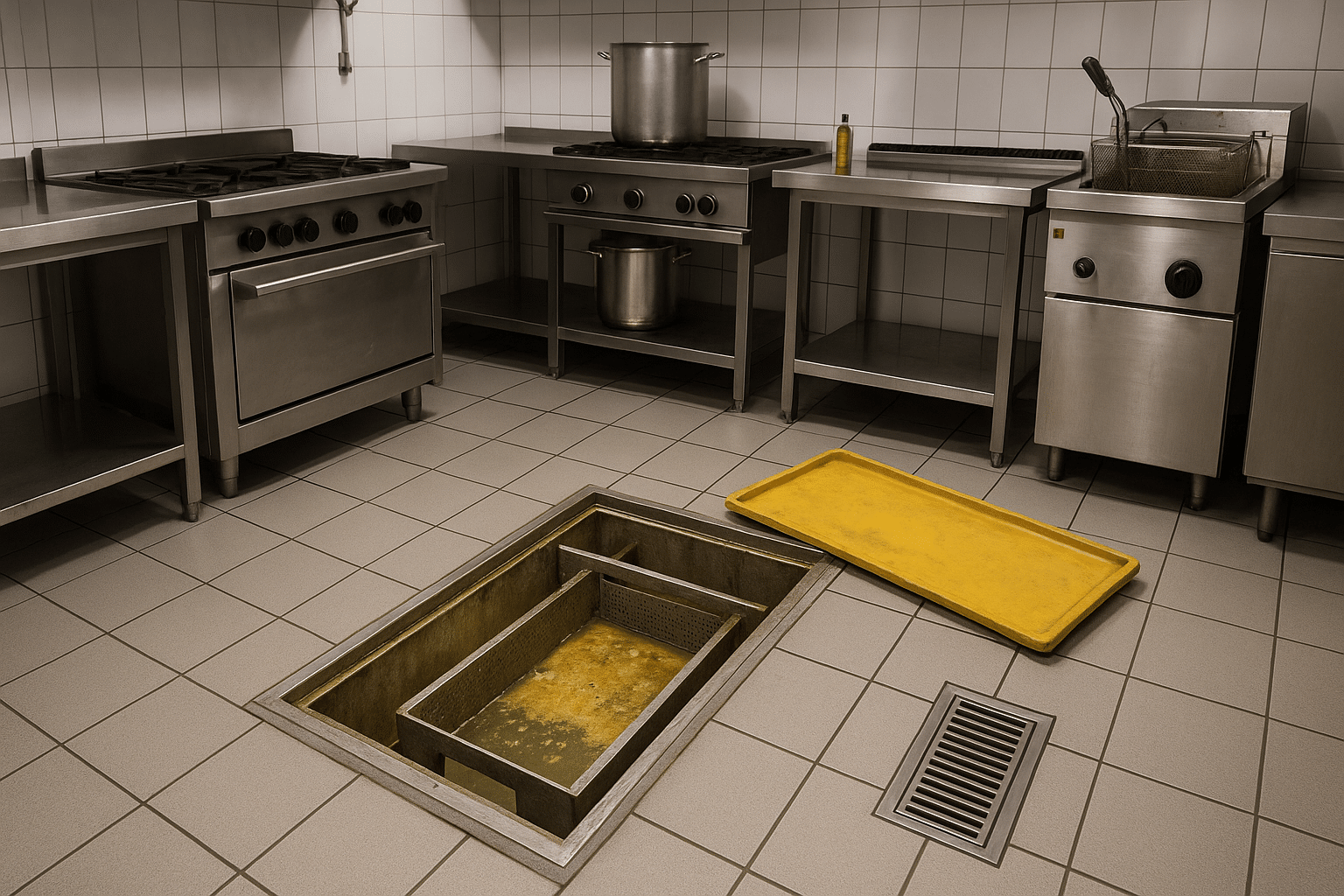If you run a restaurant, café, or any food-service business in Salt Lake City, you already know how small things can become big headaches fast. A clogged sink or a stinky kitchen corner can mean bad reviews, lost customers, and fines from the health department. That’s why kitchen Grease trap cleaning isn’t something to hope will fix itself. It’s routine maintenance, legal requirement, and, honestly, a little bit of peace of mind rolled into one.
Why grease trap cleaning actually matters (and why people ignore it until it’s too late)
Here’s the thing: grease traps collect fats, oils, and grease so they don’t flow into the sewer system. Sounds simple, right? But when they fail, you get backups, foul odors, slow drains, and sometimes nasty fines. Who wants that? No one. Yet many establishments delay cleaning because it’s messy, inconvenient, or because they think a quick rinse will do the job.
There’s also a public relations side. Food delivery and online reviews are a big part of the Salt Lake City dining scene now. One sewer backup and your restaurant could be trending for the wrong reasons. So it’s not just plumbing; it’s reputation, health, and dollars.
How grease traps work — explained without the plumber-speak
Think of a grease trap like a slow-down lane for kitchen wastewater. Hot, oily water goes in. Grease is lighter than water, so it floats and collects on top. Heavier stuff sinks. The cleaner water leaves through the outlet, heading to the sewer. That separation keeps grease out of pipes and municipal systems.
Mechanically, traps come in various sizes and designs. Some are small under-sink units; others are big, buried boxes out back. The principle is the same, though: separate and contain. If you’re into tools, professionals use things like Ridgid pumps, wet vacs, and sometimes vacuum trucks for larger setups.
How often should you schedule kitchen grease trap cleaning?
Short answer: it depends. Long answer: it depends on volume, menu, and local regulations. A busy diner in downtown Salt Lake City that fries everything will need more frequent service than a boutique coffee shop that mainly serves pastries.
| Frequency | Why | Typical time |
|---|---|---|
| Monthly | High-volume fry houses and full-service kitchens | 1–3 hours |
| Quarterly | Moderate traffic, mixed menu | 1–2 hours |
| Semi-annual | Low-volume kitchens, specialty shops | Under an hour to 2 hours |
Note: Salt Lake City has local code requirements. Sometimes the law says you must have documentation of regular cleaning. Keep records. Seriously, keep them.
What professional grease trap cleaning looks like (yes, there are steps)
You know what? Watching a pro work is kind of satisfying. Let me explain. A proper service typically includes inspection, pumping out the grease, scraping down the walls, removing solids, rinsing, and returning the trap to service. Some companies also test the trap for leaks and check flow rates to make sure everything’s working as it should.
Professionals will use certification-grade pumps and tools and then dispose of the waste at licensed facilities. That’s not just paperwork — municipal rules take this seriously. If grease is dumped improperly, your business could face fines, closures, or worse.
DIY vs hiring pros — the honest comparison
DIY can save money on a single visit. You can clean under-sink units yourself with a bucket, scraper, and gloves. But there are downsides: risk of incomplete cleaning, exposure to hazardous material, and often no proper disposal.
Hiring a pro costs more upfront but gives you compliance paperwork, better cleaning, and less hassle. You also avoid the risk of damaging the trap or your plumbing. Plus, if something shows up during inspection, pros can catch it early — before it becomes a crisis.
So yes, DIY is possible, but not always wise. Kind of like changing your own transmission — doable, but why take the gamble when a professional can do it faster and safer?
Choosing a grease trap service in Salt Lake City — what to look for
Here’s what matters: experience in Commercial kitchens, proper licensing, insured technicians, and clear documentation after each visit. You want someone who knows local regulations and who has handled everything from food trucks to big hotel kitchens.
Ask for references, ask for a sample service report, and ask about disposal methods. If they’re vague, walk away. You want transparency. You want punctuality. And you want a company that understands peak times in Salt Lake City — for example, the holiday season can mean odd schedules and after-hours service needs.
Common myths and things people get wrong (and why that’s okay sometimes)
Myth: You can pour hot water and dish soap down the drain and the grease will go away. False. That might move grease downstream where it hardens and causes worse clogs. But here’s a mild contradiction: in tiny amounts and for very light buildup, warm water can help temporarily — not a long-term solution, though.
Myth: If my trap is sealed, I don’t need to clean it. Wrong again. Traps fill up. Seals don’t prevent accumulation. Another myth: cheap Services are always a bad idea. Sometimes small local companies offer great value and care more about reputation than national firms. So check credentials, not just price.
Seasonal tips and trends for SLC operators
Winter months bring supply chain quirks and staffing shifts. Delivery apps mean more takeout, which can change grease volume overnight. During big local events, plan extra cleanings. Restaurants that plan ahead avoid emergency calls when everyone is already slammed. Honestly, a little planning saves stress and money.
Ready to make grease traps one less thing to worry about?
If you want reliable service in Salt Lake City, call Utah Hood Cleaning. We handle commercial kitchens of all sizes, keep meticulous records, and make sure you meet local regulations — without drama. You’ll get thorough cleaning, certified disposal, and a report after each visit so your manager can breathe easy.
Call us at 801-853-8155 or Request a Free Quote today. Whether you’re a food truck on 9th South or a downtown bistro, we’ll tailor a schedule that fits your operation and your budget.




